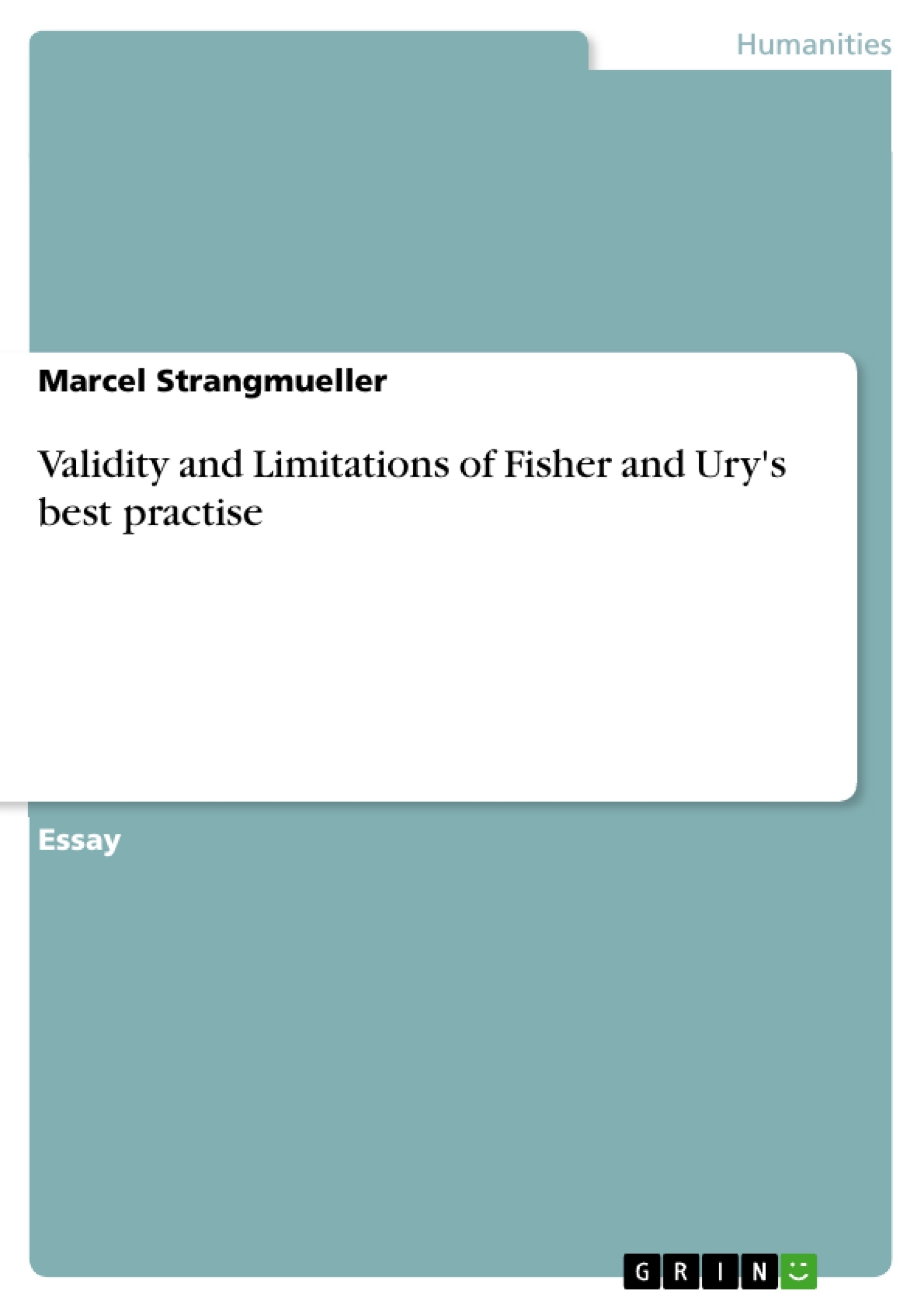This essay explores the importance of the subject of Negotiation and explains the two main approaches, principled and positional Negotiation outlined by Ury and Fisher in the book Getting to Yes.
Inhaltsverzeichnis (Table of Contents)
- Validity and Limitations of Fisher and Ury's Best Practice
- Negotiation and its Definitions
- Elements of Negotiation
- Behaviours of a Good Negotiator
- Different Negotiation Approaches and Outcomes
- Limitations of Cooperative Negotiation
Zielsetzung und Themenschwerpunkte (Objectives and Key Themes)
This essay examines the validity of Fisher and Ury's statement that a good negotiator should actively listen and acknowledge the legitimacy of the other party's point of view, contrasting this approach with the more common competitive style. It aims to determine the extent to which this best practice holds true and analyze its limitations.
- Definitions and elements of negotiation
- The importance of communication and legitimacy in negotiation
- Characteristics and behaviors of a good negotiator
- Different approaches to negotiation: cooperative vs. competitive
- Limitations of the cooperative approach and situations where competitive negotiation may be more effective
Zusammenfassung der Kapitel (Chapter Summaries)
- The essay begins by exploring various definitions of negotiation, highlighting the emphasis on reaching an agreement through discussion. It then identifies seven key elements that influence negotiations, including interests, legitimacy, relationship, alternatives, options, commitments, and communication.
- Focusing on the elements of legitimacy and communication, the essay argues that failing to acknowledge the other party's point of view undermines the negotiation process, potentially leading to a stalemate. The importance of active listening and understanding the other party's perspective is emphasized.
- The essay then examines the characteristics of a good negotiator, highlighting the importance of preparation, objective criteria, and active listening. It explores different negotiation approaches, including the cooperative approach advocated by Fisher and Ury, and the competitive approach, which prioritizes achieving one's own goals.
- The limitations of the cooperative approach are discussed, acknowledging that competitive negotiation can be effective in certain situations, particularly when time or money are crucial factors.
Schlüsselwörter (Keywords)
This essay focuses on negotiation, best practices, cooperative and competitive approaches, active listening, legitimacy, communication, Fisher and Ury's "Getting to Yes", and different negotiation outcomes.
- Quote paper
- Marcel Strangmueller (Author), 2018, Validity and Limitations of Fisher and Ury's best practise, Munich, GRIN Verlag, https://www.grin.com/document/417201




